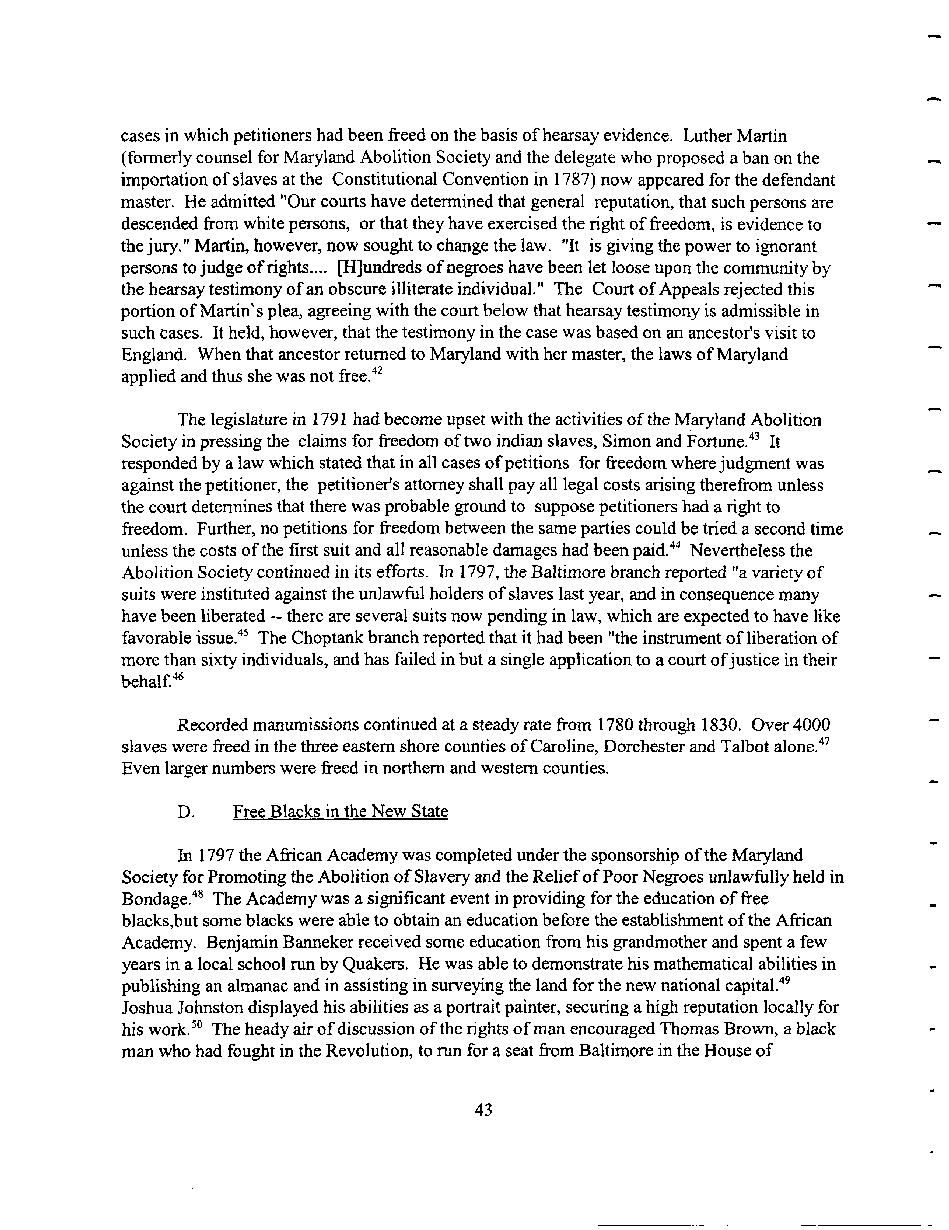|
cases in which petitioners had been freed on the basis of hearsay evidence. Luther Martin
(formerly counsel for Maryland Abolition Society and the delegate who proposed a ban on the
importation of slaves at the Constitutional Convention in 1787) now appeared for the defendant
master. He admitted "Our courts have determined that general reputation, that such persons are
descended from white persons, or that they have exercised the right of freedom, is evidence to
the jury." Martin, however, now sought to change the law. "It is giving the power to ignorant
persons to judge of rights.... [HJundreds of negroes have been let loose upon the community by
the hearsay testimony of an obscure illiterate individual." The Court of Appeals rejected this
portion of Martin's plea, agreeing with the court below that hearsay testimony is admissible in
such cases. It held, however, that the testimony in the case was based on an ancestor's visit to
England. When that ancestor returned to Maryland with her master, the laws of Maryland
applied and thus she was not free.42
The legislature in 1791 had become upset with the activities of the Maryland Abolition
Society in pressing the claims for freedom of two indian slaves, Simon and Fortune.43 It
responded by a law which stated that in all cases of petitions for freedom where judgment was
against the petitioner, the petitioner's attorney shall pay all legal costs arising therefrom unless
the court determines that there was probable ground to suppose petitioners had a right to
freedom. Further, no petitions for freedom between the same parties could be tried a second time
unless the costs of the first suit and all reasonable damages had been paid.44 Nevertheless the
Abolition Society continued in its efforts. In 1797, the Baltimore branch reported "a variety of
suits were instituted against the unlawful holders of slaves last year, and in consequence many
have been liberated ~ there are several suits now pending in law, which are expected to have like
favorable issue.45 The Choptank branch reported that it had been "the instrument of liberation of
more than sixty individuals, and has failed in but a single application to a court of justice in their
behalf.46
Recorded manumissions continued at a steady rate from 1780 through 1830. Over 4000
slaves were freed in the three eastern shore counties of Caroline, Dorchester and Talbot alone.47
Even larger numbers were freed in northern and western counties.
D. Free Blacks in the New State
In 1797 the African Academy was completed under the sponsorship of the Maryland
Society for Promoting the Abolition of Slavery and the Relief of Poor Negroes unlawfully held in
Bondage.48 The Academy was a significant event in providing for the education of free
blacks,but some blacks were able to obtain an education before the establishment of the African
Academy. Benjamin Banneker received some education from his grandmother and spent a few
years in a local school run by Quakers. He was able to demonstrate his mathematical abilities in
publishing an almanac and in assisting in surveying the land for the new national capital.49
Joshua Jonnston displayed his abilities as a portrait painter, securing a high reputation locally for
his work.50 The heady air of discussion of the rights of man encouraged Thomas Brown, a black
man who had fought in the Revolution, to run for a seat from Baltimore in the House of
43
�
|

